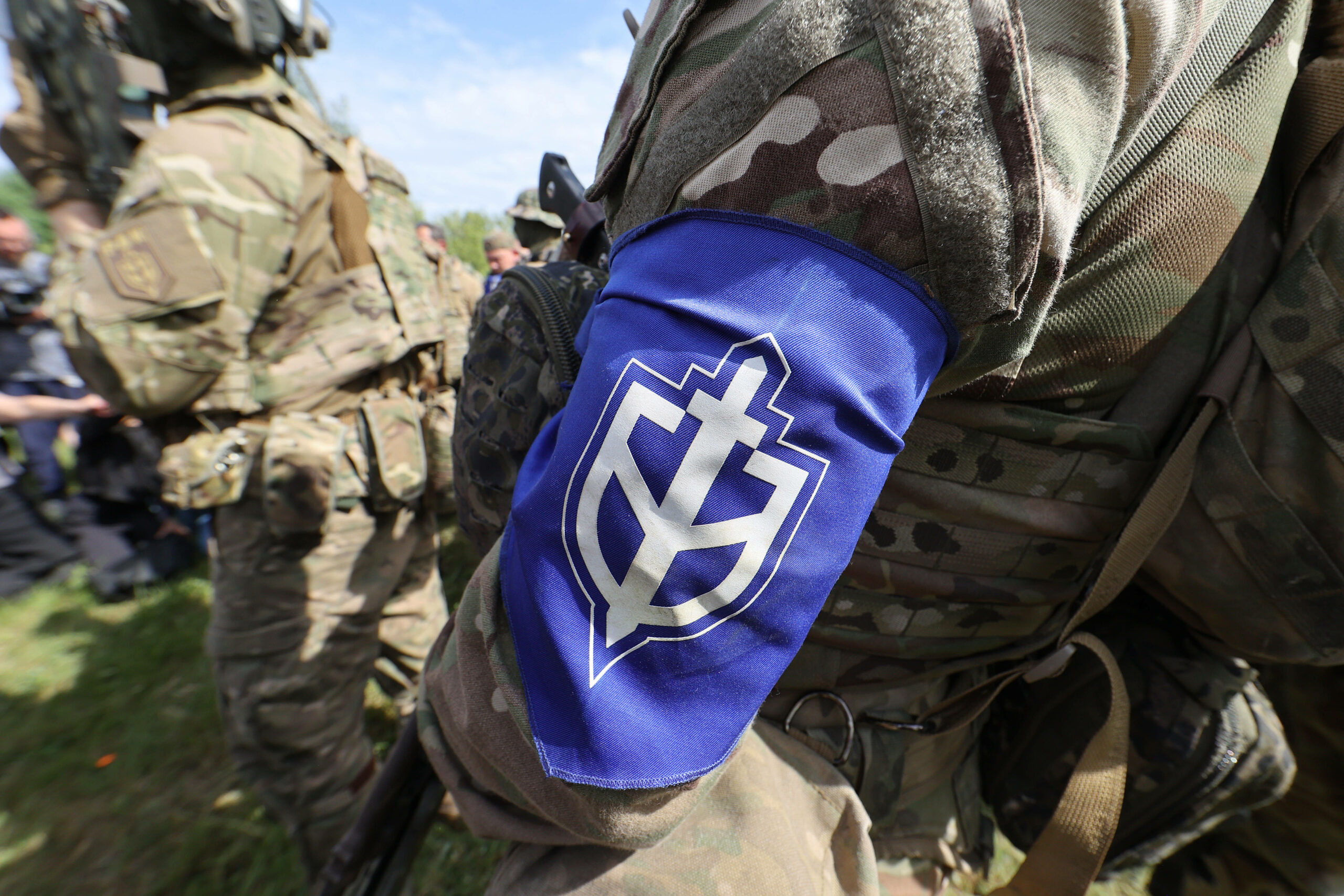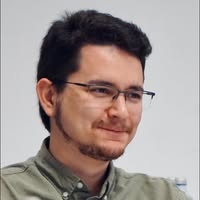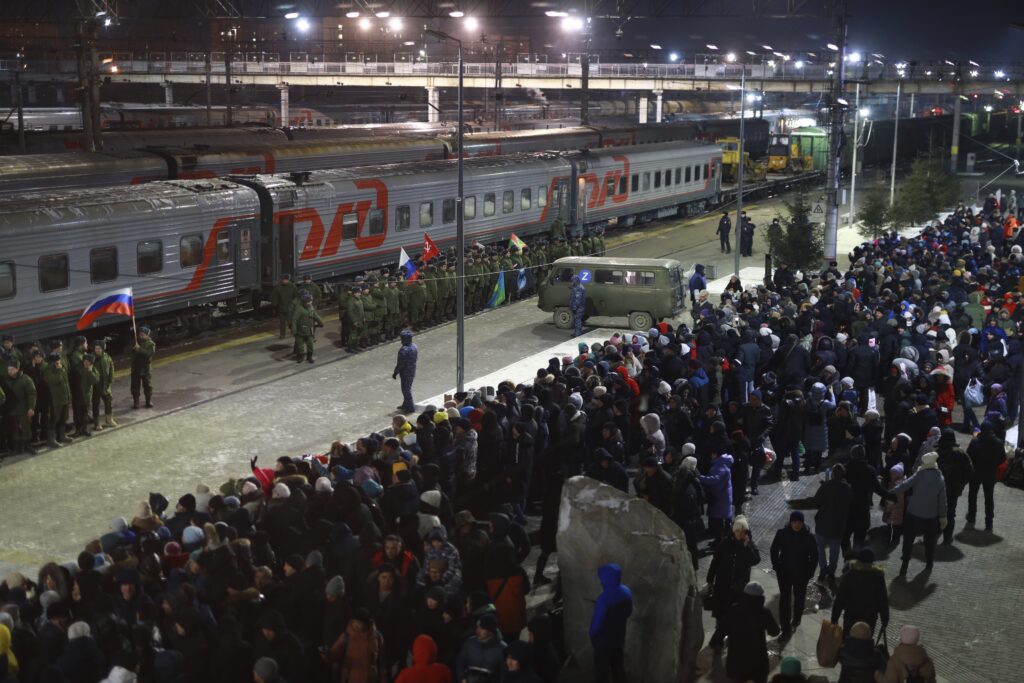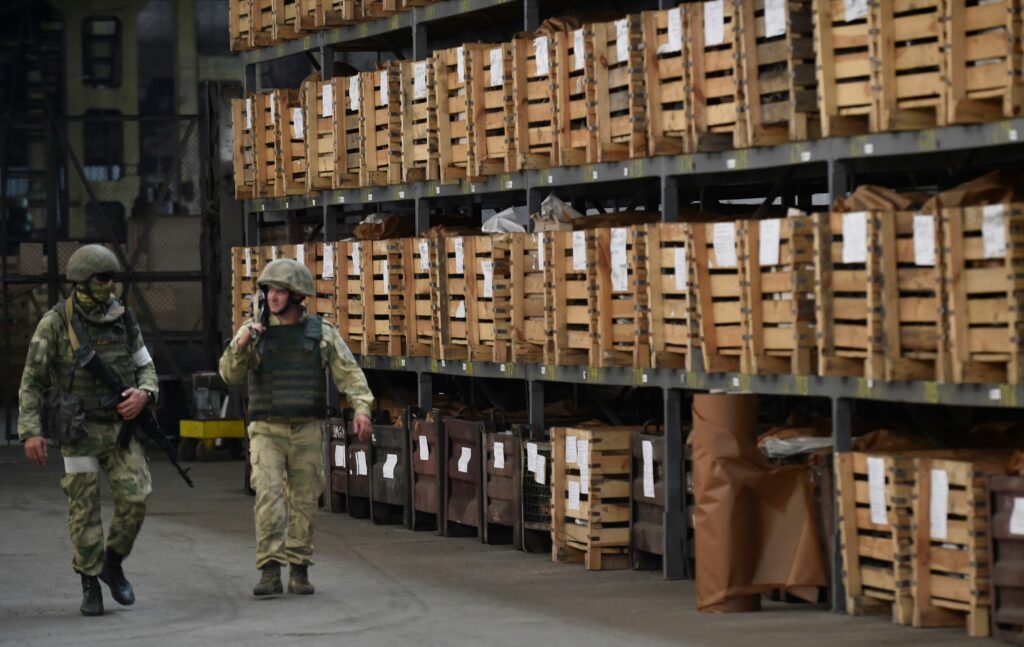Throughout the Soviet times, the White Guards were the ideal «arch enemies». The elite of post-Soviet Russia invented «the good Whites» to instrumentalize this concept in their ideological politics. Anti-communism was almost entirely excluded from the new «White Movement,» and the core of Putin’s «White Idea» was «greatpowerness». With the onset of the war in the Donbass in 2014, a different interpretation of the «White Idea» emerged among the Russians fighting on the side of Ukraine. Proponents of this idea moved away from the concept of «greatpowerness», focusing on anti-communism and «White» aesthetics. Both interpretations, however, are rather tangentially related to the historical White Movement.
The «Russian World» and the War Against Ukraine
In 2005, Vladimir Putin was among those who initiated the reburial in Russia of prominent figures of the White movement: General Anton Denikin and philosopher Ivan Ilyin. In 2009, he laid flowers on their graves and made several statements to journalists, notably, referring to Ukraine:
«Denikin talks about big Russia and small Russia, that is, Ukraine. He writes that no one is allowed to interfere in relations between us; it has always been a matter for Russia itself. Denikin, for all his intolerant attitude toward the Soviet authorities, also believed that even to think of dismembering Russia was a crime, that the „balkanization“ of Russia was unacceptable. Denikin was particularly intolerant of such ideas.»
This statement was condemned by Boris Nemtsov, who called Putin’s words «ill-considered and obviously harmful.» The then Ukrainian President Viktor Yushchenko called on the Russian leadership to «forget about the ambitions of a metropolis and the grievances of a colony,» and instead «build equitable and pragmatic relations.» The European and American media read Putin’s statement as a signal to the West «not to interfere in relations between Russia and Ukraine.»
In 2014, Russia’s «Whites» were at the cutting edge of the war in Donbass. Igor Strelkov (Girkin), the self-proclaimed «Minister of Defense of the DNR,» had been a member of «White» organizations since the 1990s. In the 2000s, Strelkov collaborated with the «Orthodox oligarch» Konstantin Malofeyev and participated in the historical reconstruction of the White Movement.
Igor Ivanov, the head of the ROVS, the core «White» organization in Russia, was also in Slavyanska along with Strelkov. In June and August, he headed the political department of the «DNR militia,» «reviving the traditions of the Russian army.» After Strelkov’s resignation, Ivanov also returned to Russia.
The Russian state used the memory of the «White movement» in monumental propaganda, including monumental propaganda in the annexed territories. In 2016, for example, a monument to General Wrangel was unveiled in Kerch, funded, for the most part, by the federal government. In 2021, a joint memorial to «Whites and Reds» was erected in Sevastopol, and later on Putin gave a public speech near the venue. In 2021, in his essay «On the Historical Unity of Russians and Ukrainians», he again contrasted Ukraine to the White movement:
«The example of the UPR shows that different kinds of quasi-state formations that emerged across the former Russian Empire at the time of the Civil War and turbulence were inherently unstable. Nationalists sought to create their own independent states, while leaders of the White movement advocated indivisible Russia.»
In a February 21, 2022 speech, Putin declared that Ukraine emerged as a result of Bolshevik policies and threatened to show Ukraine «real decommunization.» In fact, his «real decommunization» manifested itself in wide-spread efforts to reinstate Lenin statues and return Soviet names to localities across the occupied towns of Ukraine.
The «Russian Center» and Russian Volunteer Corps
The war in Ukraine contributed to the emergence of an alternative interpretation of the «White cause,» first and foremost, among Russia’s far-right. The events of 2014 split this community into three parts. One part, motivated by the authorities, left for the Donbass to fight for the «People’s Republics.» The second part condemned the war, but continued its activities in Russia. Finally, there were those who went to Ukraine and enlisted to fight on the side of Ukraine.
In 2014−2015, several Russian citizens, most of them professing right-wing views, enlisted in the Azov Brigade. They regarded the war in Donbass as a continuation or extension of the fight against Putin’s («neo-Soviet») regime. Not infrequently, frontlines cut across friendships and long-time committments with former friends and colleagues finding themselves on the opposite sides of the front. The «ideological» division was oftentimes very tentative, and the sides were willing to discuss each other’s position, as was the case in the Viharev-Milchakov exchange.
In addition to engaging in hostilities, the Russian far-right attempted to establish a political organization in Ukraine. In 2015, the «Russian Center» was set up in Kiev with the purpose of «drawing together an uniting the opponents of the Putin regime.» The activities of the «Russian Center» produced both the symbolism and ideology of the modern Russian Volunteer Corps. The symbol of the «Russian Centre» was the badge of the organisation «White Idea», founded in the 1930s by the white emigrant Victor Larionov. In April 2023, in an interview with Sota, members of the Russian Volunteer Corps argued that they considered themselves to be the successors of Larionov’s organization. In turn, Larionov’s «amalgam» (Russ. «спайка», a combination of a sword and shield) is little more than a modified sign of the White Movement’s «Ice Campaign» (with the point of the sword pointing downward).
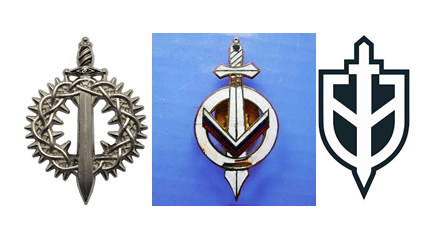
Incidentally, that very same symbol was actively used by nationalists at the Russian march that took place in a Moscow district Lublino in 2015. At that time, several thousands of far-right activists marched against the war with Ukraine, some of them carried or were decorated with symbols and slogans that are now used by the Russian Volunteer Corps, for example, «Let’s go get us the Motherland.»
«Markovians»: mythical and real
In addition to the «Amalgam,» the Russian Volunteer Corps also uses a black banner with a diagonal white cross («Markov’s Banner») (Sergey Markov was one of the founders of the Volunteer Army counterrevolutionary force of the White movement in southern Russia during the Russian Civil War). It was presented to the «Corps» by certain Russians known by their call signs «Pomor» and «Varyag», who served in the Azov regiment in 2015−2019. It was then that they chose the flag of Markov’s «White» regiment as their banner: a symbol of the «continuation of the struggle against Putin’s neo-Soviet reign» (the Russian original uses the pejorative term «sovok» to denote the Soviet period).
The «Markovtsys’» attitude to Ukraine during Russia’s civil war (1917−1922/23) is an interesting question. Colonel Bitenbinder, a «Markovian», wrote: «A Ukrainian battalion was to be formed under our division, which was supposed to be deployed to the division on the right bank of the Dnieper. Some Ukrainians, who did not inspire confidence in their appearance, even arrived to us, speaking „mova“ (i.e. Ukrainian language. It boded little chance of success».
In 1919, in the territory of Ukraine, the «Whites» (The Armed Forces of South Russia (AFSR) headed by Denikin) not once fought the forces of the Ukrainian People’s Republic on the battlefield. Denikin dismissed the idea of an alliance with the Ukrainian national movement, despite sharing an enemy: the Bolsheviks. He demanded total submission from Ukrainian politicians. As a result, the conflict with the Ukrainian national movement contributed to the defeat of the Whites and their retreat from Ukraine in 1919−1920.
«The New Whites»: War and Ideology
Today’s «Whites» represented by the Russian Volunteer Corp are actively fighting on the side of Ukraine and have conducted several combat operations on Russian territory. For example, on March 2, 2023, the Corps announced a raid in the Bryansk region, and in April it was also reported to have entered Russian territory. In May, members of the Corps raided the Belgorod region. In early June, the RVC seized and held control over the village of Tavolzhanka in the Belgorod region for almost a week. Around the same time, for the first time ever, representatives of the Russian Volunteer Corps publicly addressed the official authorities of the Russian Federation. On 4 June, they invited the governor of Belgorod region to come to a meeting in Novaya Tavolzhanka in exchange for the return of two prisoners of war to Russia. Unexpectedly, Yevgeny Prigozhin responded to this proposal by offering to send his own representative to the negotiations. However, neither Prigozhin nor Gladkov showed up at the proposed meeting, so, according to the Russian Volunteer Corps, the prisoners were transferred to the «PoWs exchange fund» of Ukraine. However, the relationship between the RVC and Prigozhin did not end there. On June 11, it was announced that the captured «Wagner» fighter Vladislav Izmaylov was going to serve in the RVC. The next day Yevgeny Prigozhin confirmed this information, expressing hope that the traitor will be «tracked down and killed.»
Is there any way to describe the ideology of the Russian Volunteer Corps, and is there any ideology at all? We only possess detailed information about the leaders and several fighters of the unit: it’s clear that they do adhere to an ultra-right-wing ideology. But the problem is not so much their radical creed, but rather the fact that these ideas and even symbols were already present within Russian political space throughout the 2000s and 2010s. Yet even then, long before the onset of the war and large-scale political repression, these ideas appealed to a fairly limited segment of Russian society. It remains to be seen to what extent the ideology of the RVC can become a framework for an «anti-Putin» resistance on a nation-wide scale.
